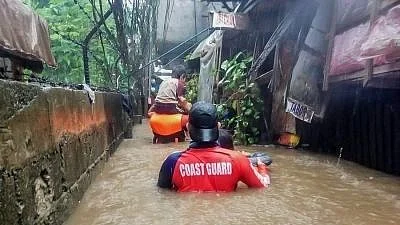Typhoon Noru hit the coast of Philippines on 25 September 2022. The storm was initially predicted to be the equivalent of a category 1 hurricane, however, within only six hours of closing in on land, the typhoon intensified considerably. By Sunday, when the storm finally made landfall, it was the equivalent of a category 5 hurricane.
The intensity of the typhoon could not be predicted because it intensified rapidly within a matter of hours. Climate scientists tell us that incidents like these will only get more and more frequent.
Rapid Intensification of Storms
Philippines is prone to storm damage, experiencing nearly 20 tropical storms every year. Typhoon Noru was not even nearly the worst storm the country has experienced in the last decade, niether did it cause the most damage, but what was found startling was how quickly it gained strength.
This incident was very similar to the recent Hurricane Ian that went on a rampage across Cuba and the coast of US. Hurricane Ian was also predicted to be a Category 1 storm, however, by landfall it had risen to a Category 4 Hurricane.
While Noru was relatively tamer compared to other storms that have hit Philippines, it did leave a trail of destruction in its wake. The Typhoon caused nearly 51 million dollars of agricultural damage and killed 12 people in the Philippines, according to the National Disaster Risk Reduction and Management Council (NDRRMC).
Climate Change is Affecting the Severity of Storms
Climate experts have claimed that rapidly intensifying storms are now expected to become commonplace. This will make it much harder to predict the intensity of the storm before it makes landfall.
According to a study conducted in 2018, Philippines will now be subjected to more prolonged and severe storms due to rising sea levels and increasing ocean temperatures.
In 2021, researchers from Shenzhen Institute of Meteorological Innovation and the Chinese University of Hong Kong discovered that typhoons along east and southeast Asia have been travelling approximately double the distance inland and are now two to nine hours longer than those that occurred 40 years ago.
The cause of these factors influencing extreme weather events is rooted in climate change.
(This story contains inputs from News UN and CNN.)
Our on-ground climate journalism needs your insights, ideas, and financial support - as we cover the biggest crisis of our times. Become a Q-Insider so we can bring more such stories to light.
